#renewable power
Text

1K notes
·
View notes
Text
#good news#ireland#wind farm#wind energy#wind turbines#wind power#green energy#renewable power#renewable energy
798 notes
·
View notes
Text
Guys I know Climate Change is super scary in the news. I know it's terrifying and seems like the end of the world. And it could be! But it isn't going to be.
I want to take this time to remind all of you how far we've come in the past twenty-ish years since "An Inconvenient Truth"
Fossil Fuels
We use less fossil fuels now proportionally than we did in 2009. Coal used to be 50% of the United States's energy production, but now is down to less than a quarter, and is expected to continue to drop in the upcoming years. This is including in traditionally anti-renewable areas that rely on coal heavily, like Wyoming's shift to wind and solar and Kentucky and West Virginia's shift to hydroelectric.
Most remaining coal plants are either shutting down or using filtration systems to reduce the carbon, methane, and heavy metals put into the air. Coal mines are shutting down - the era of King Coal is over.
Yes, many states are shifting to natural gas, but the carbon density of natural gas is lower than both oil and coal. Extraction of it is less dangerous. It's not better than renewables, but is a great alternative for developing countries that don't have the money for renewables - at least for the time being.
Oil and diesel are gradually being phased out as well. Desires to be economically independent from oil rich countries like Saudi Arabia and Russia have driven policy makers away from it. Areas like Alaska that rely heavily on diesel for heating are switching to renewable energy and less energy intensive heat pumps.
Fossil fuel companies are continuing to do their lobby thing, but it doesn't matter. Climate change isn't even the driving factor right now - it should be, but the increasing cost of fossil fuel extraction is slowly breaking the industry. In the US, it's just not as profitable as it was thirty years ago.
Nuclear
Nuclear energy is fast-growing. While it's somewhat stagnated in the US, countries like France, Russia, South Korea, Germany, and Japan are relying on increasing amounts of nuclear energy - in France's case, almost 4/5ths of their electricity comes from nuclear energy.
We've found ways to make the Uranium and Thorium last longer in the reactor, and in fact, nuclear power plants are among the safest in the world. The only emission is water vapor - not including the construction - and we have hundreds or thousands of years left of nuclear energy at our current consumption, even more if we can find out how to harness ocean Uranium and seafloor Thorium or harness nuclear fusion.
Nuclear power plants produce absurd amounts of electricity - a single 6 gigawatt power plant (high end, but do exist) could singlehandedly provide the entire electric requirements of New York City - think of what several of them across the country could do. They generate power incredibly reliably.
Nuclear disasters like Fukushima and Chernobyl are far behind us. Fukushima was entirely preventable - they knew about the lack of safety regulations and did not fix them - and Chernobyl was 40 years ago. Technology has come a long way since then.
Hydroelectric
Hydroelectric dams that kill fish are out - tidal turbines and fish ladders are in. Fish ladders provide ways for fish to escape and not get caught in the turbine, though the reduced quality of life both up and downstream is an issue.
Enter tidal energy! Yes, really!
A startup in Scotland, MeyGen has proven that two-way off-shore turbines can provide significant amounts of electricity. Just four turbines were enough to provide electricity to over 4,000 homes. Tidal barrages have been used on bridges and coasts to generate hydroelectric energy from the incoming ocean waves.
There are no significant emissions beyond construction, AND the turbines and barrages *do not kill fish or sea creatures*. The turbines, at worst, caused dolphins and seals to simply avoid the area the turbines were in. They work when the ocean is flowing either direction, and can be put nearly anywhere - think about the power the Gulf Stream would generate!
Solar
Solar energy is fast-growing - and this part is my favourite. Homes are being designed with solar heating in mind. Not just in the panels, no - window placements, albedo, and materials have allowed homes to be heated by the sun in winter, but shielded from it in summer. A properly solar optimized home can cut on 75% of electricity use!
Solar panels are up to 46% efficiency now, which is insane. In parts of the western US, up to 8.6 kWh per m^2 of solar panels can be generated. For perspective, a single home uses about 30 kWh per day - a number that is decreasing. A home would only need about 43 square feet of solar panels to power their home, and lord knows roofs have more space than that.
Roofs are being designed to reflect heat, to reduce the heat island effects of big cities. Green spaces are being built for shade and cooling through transpiration. They've even invented a paint that reflects so much heat that it can cool your home by several degrees.
They've even invented thin-film solar panels that you can use as windows. Yeah! Solar panels YOU CAN USE AS WINDOWS! So skyscrapers that are covered in windows on all sides - think about the power generation. An office building doubling as a power plant. It's incredible.
Wind
Wind turbines don't kill that many birds. They used to, but they don't anymore - at least in most areas. The myth comes from the old 1960s turbines that were low to the ground and spun fast like a fan, so birds had trouble seeing where the blades were. The high up turbines nowadays are really only a problem for high-flying birds of prey, but even that's still being worked on. Wind energy is becoming increasingly efficient and producing more power than ever before.
Geothermal
Geothermal energy is going crazy. Iceland uses it to heat their homes and keep their streets ice-free instead of using snowplows in Reykjavik. There are systems in production now that would be able to generate power year-round using the heat of the earth.
By using a special liquid with a lower boiling point than water, electricity can be generated easily and without any kind of toxic waste that would normally result from groundwater energy production.
Geothermal plants can also be used for temperature regulation - the ground stays a relatively constant temperature. Say it's 65 degrees Fahrenheit in an area. In summer, you can pump that heat underground instead of into the air, which contributes to heat islands. In winter, when it's colder, you can extract the heat back out again. Heat and cooling are the single biggest energy sink in the US and in most parts of the world, and it's about to become completely clean.
Energy Consumption and The Grid
While CO2 emissions are increasing, that's mostly due to population increase. The emissions per capita has actually gone down - the average person produces almost 20 tons fewer of CO2 emissions than in 1990, and that number is going to continue to drop.
As we shift more towards renewable energy and working from home, those emissions per capita are going to drop more and more. People buy more local now. They use electric cars. Their household appliances have spiked in efficiency. LED bulbs produce significantly less emissions than the incandescent bulb, and the number of LED bulbs across the world is rapidly increasing.
The Grid is changing. Normally, the reason power generation produces so much CO2 is that power plants can't shut down - they have to produce at all hours of the day to remain economical. They produce more in the evenings when electricity demand is higher, and less in the early morning when it is lower.
The new electric grid would have energy storage. If a home or a power source, such as solar, produced too much energy, it would be sent back into the grid and stored for spikes in demand later - the system would become more efficient, and overproduction of electricity would no longer mean wasting it.
Conservation and Restoration
We can un-desertify farmland. We've figured out how to bring back rivers and streams that have dried up from overfarming in sub-saharan Africa. We can plant trees, we can enrich the soil, we can undo the damage that we've caused.
We can bring back coral. We can increase the albedo of the Arctic and Antarctic. We can re-introduce extinct animals and bring balance to the ecosystem again. We've massively reduced poaching and needless hunting of endangered animals. We know how to make sustainable, permaculture farming practices.
We have everything we need to fix the ecosystems we've damaged or destroyed - and people are already doing it.
Why it's actually gonna be okay
Guys, we're past the worst of it. Maybe not the worst of the effects of climate change, but certainly the worst of the emissions. We are going to have a clean future. Young people support environmental regulations the most, and there are enough passionate young minds that it's going to get done.
I know I talked most about the US here, but it's changes all across the world. I focused on the US because it has the highest per capita emissions of any country on Earth. Don't be fooled though - everyone is going green.
Meat is being eaten less than ever before. Fewer people drive cars. Fewer people waste and throw things away. Don't let the scary news of private jets and mega-corporations disillusion you. GOOD CHANGES ARE HAPPENING!
Enough of the doomer apocalypse viewpoint of climate change. There is a hopeful future for all of us. Let's achieve it together!
#climate change#climate crisis#hopeful ending#future#climate doomerism#my silly little posts#renewable power#renewable future#solarpunk
345 notes
·
View notes
Photo
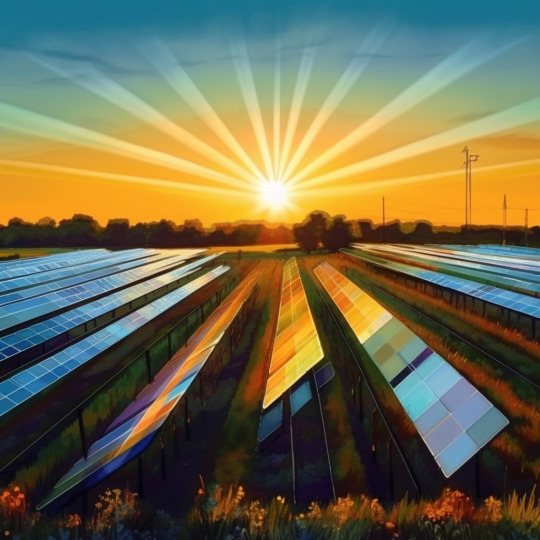


Envision Our Energizing-Vibrant Renewable Future Now
#earth day#earth month#renewable energy#renewable power#ai art#ai#image generation#design#climate art#renewable electricity#power sources#vibrant skies#solar power#solar#wind#wind energy#green future#solarpunk#renewables#midjourney#imagination#image building
248 notes
·
View notes
Text
5 January 2024
At Khalifa School in the previous post, journalist Mahmoud Sabbah documents the return of the people of Gaza to the area, with some displaced people using the remains of the school as a shelter. They have carried with them damaged solar panels that were originally on a home or business, but have been repaired. They have been hooked up to batteries, and can now power small devices. The people of Gaza will always rebuild. Always.
Source: Mahmoud Sabbah via Instagram Stories on Instagram


#gaza genocide#north gaza#gaza#gaza strip#gaza under attack#free gaza#from the river to the sea palestine will be free#gaza journalists#palestinian genocide#khalifa school#Mahmoud sabbah#go green#renewableenergy#renewable power#renewable energy#sustainability
96 notes
·
View notes
Text
"Taking coal burried deep in the earth, for which we must inflicted irruptiable damage violates every precept of the Code. By no strech of the imagination Coal is not given to us, we have to wound the land and water to rob it from mother earth.
What if a coal company planning for mountain top removal in the ancient folds of the Appalachians where compelled by law to only take what is given
Don't you long to hand them that laminated letter and announce that "the rules have changed. "
It doesn't mean we can't consume the energy we need. But it does mean that we honorably take what is given. The wind blows every day, the sun shines every day, everyday the waves roll across the shore, and the earth is warm below us.
We can understand these renewable sources of energy as given to us since they are the sources that have given energy and life to the planet as long as there has been a planet. We need not destroy the earth to make use of them."
Braiding sweetgrass- Robin wall kimmer
74 notes
·
View notes
Text
#vote blue#vote democrat#vote biden#democrats#democracy#social democracy#democratic socialism#democrats now socialism later#vote blue to save democracy#vote blue 2024#biden/harris 2024#vote biden/harris#environmentalism#environmental protection#renewable power
16 notes
·
View notes
Text
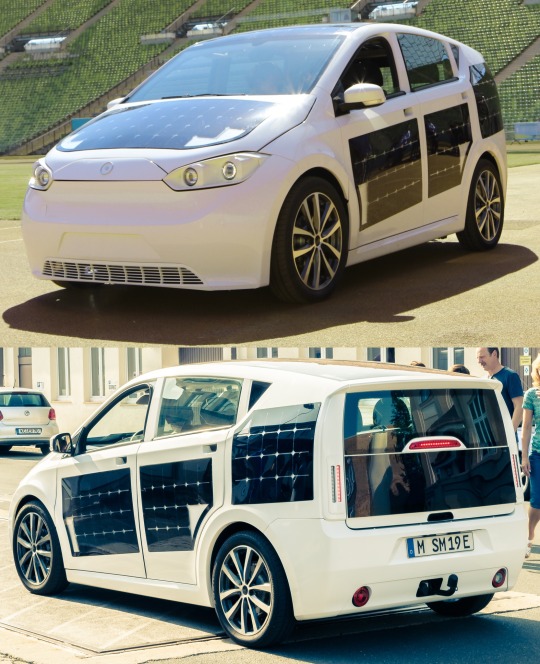
Sono Motors Sion
#electric vehicles#electric vehicle#ev#solar power#sono motors#sion#solar powered car#solar powered#solar panels#wikipedia#wikipedia pictures#renewable power#renewable energy#cars#vehicles#automobile#carblr#car blog#sono motors sion#sono sion#sono#transportation#transport#energy efficiency
11 notes
·
View notes
Text
17 notes
·
View notes
Text
#renewable power#renewable energy#greenhouse gas emissions#green technology#green energy#environmentalism#good news#science#environment#nature#climate change#climate crisis
148 notes
·
View notes
Text
#andreazanon#confidente#confidence#climate change#renewable power#uae#pif#saudi arabia#Private equity
2 notes
·
View notes
Text
This Is The Best Book I’ve Ever Read to Empower Anyone with Real Climate Hope
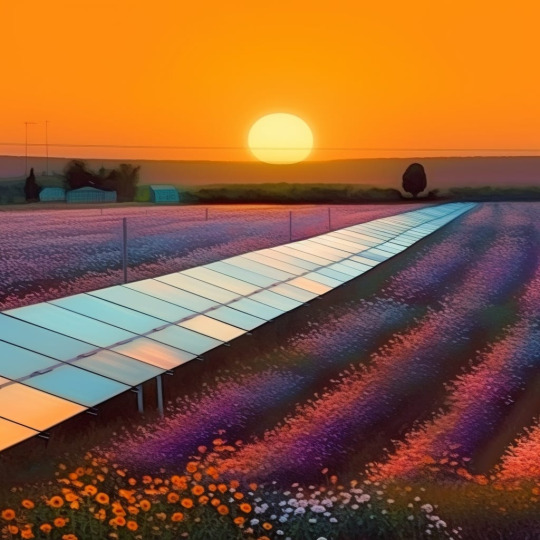
READ MY REVIEW👉 Not Too Late: Changing the Climate Story from Despair to Hope
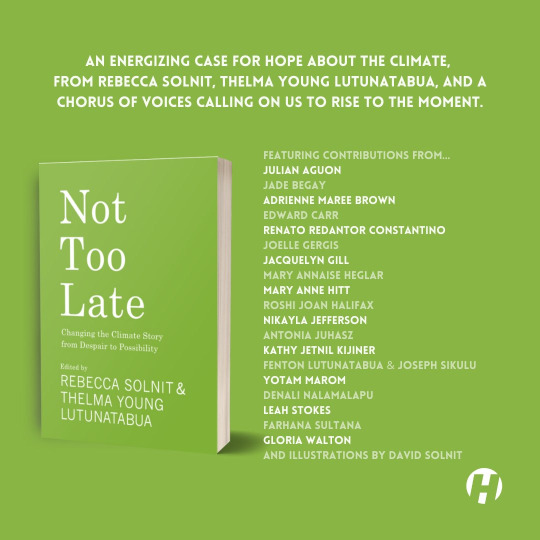
"To hope is to accept despair as an emotion but not as an analysis. To recognize that what is unlikely is possible, just as what is likely is not inevitable."
—Rebecca Solnit
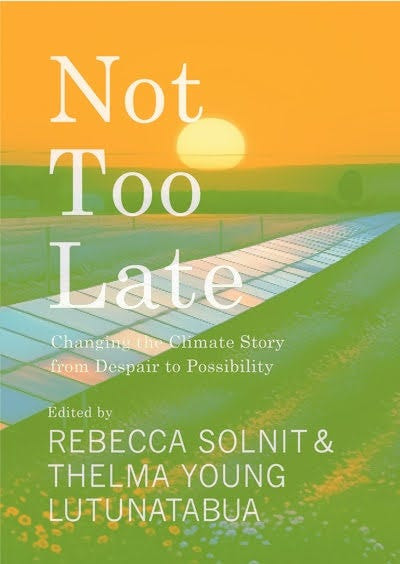
What gives me hope is that human history is full of examples of people across the ages who have risen to face the great challenges of their time and have succeeded. Victory is not the arrival in some promised land; it is the series of imperfect victories along the way that edge us closer to building the critical mass that eventually shifts the status quo.” —Rebecca Solnit
Not Too Late: Changing the Climate Story from Despair to Hope
#climate hope#climate#climate change#climate art#climate optimism#climate action#climate justice#climate book#book review#book recommendations#environment#earth month#book#books#rebecca solnit#renewable energy#renewable power#courage#climate solutions#favorite quotes#quotes#inspiration#inspiring quotes#envrionment#environmental communication#climate communication#favorite books#despair#possibility#climate story
38 notes
·
View notes
Text
MIT design would harness 40 percent of the sun’s heat to produce clean hydrogen fuel
Conventional systems for producing hydrogen depend on fossil fuels, but the new system uses only solar energy.
Jennifer Chu | MIT News
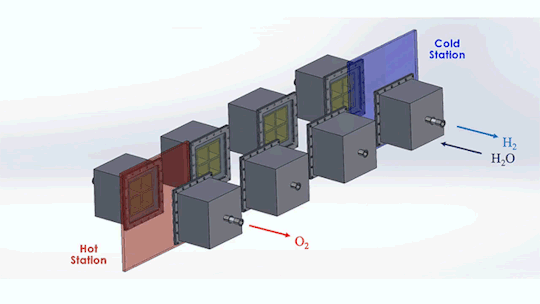
MIT engineers aim to produce totally green, carbon-free hydrogen fuel with a new, train-like system of reactors that is driven solely by the sun.
In a study appearing today in Solar Energy Journal, the engineers lay out the conceptual design for a system that can efficiently produce “solar thermochemical hydrogen.” The system harnesses the sun’s heat to directly split water and generate hydrogen — a clean fuel that can power long-distance trucks, ships, and planes, while in the process emitting no greenhouse gas emissions.
Today, hydrogen is largely produced through processes that involve natural gas and other fossil fuels, making the otherwise green fuel more of a “grey” energy source when considered from the start of its production to its end use. In contrast, solar thermochemical hydrogen, or STCH, offers a totally emissions-free alternative, as it relies entirely on renewable solar energy to drive hydrogen production. But so far, existing STCH designs have limited efficiency: Only about 7 percent of incoming sunlight is used to make hydrogen. The results so far have been low-yield and high-cost.
In a big step toward realizing solar-made fuels, the MIT team estimates its new design could harness up to 40 percent of the sun’s heat to generate that much more hydrogen. The increase in efficiency could drive down the system’s overall cost, making STCH a potentially scalable, affordable option to help decarbonize the transportation industry.
“We’re thinking of hydrogen as the fuel of the future, and there’s a need to generate it cheaply and at scale,” says the study’s lead author, Ahmed Ghoniem, the Ronald C. Crane Professor of Mechanical Engineering at MIT. “We’re trying to achieve the Department of Energy’s goal, which is to make green hydrogen by 2030, at $1 per kilogram. To improve the economics, we have to improve the efficiency and make sure most of the solar energy we collect is used in the production of hydrogen.”
Keep reading.
Make sure to follow us on Tumblr!
#renewableenergy#solar#renewable power#climate change#sustainability#energy#carbon emissions#environment#mechanical engineering
4 notes
·
View notes
Text
Agrivoltaic researchers have been assembling evidence that the partial shade of solar panels can improve crop yields while conserving water and soil. The relationship is reciprocal, as the vegetation beneath the array creates a cooling microclimate that improves solar conversion efficiency (see more CleanTechnica coverage here).
The idea has already gained widespread acceptance, but the underlying research is still a work in progress.
P.S. With this technology, agricultural districts and countries gain almost complete energy independence and can successfully increase the productivity and profitability of agricultural lands...
#USA#solar power#agrivoltaic#renewable power#renewable electricity#energy independence#energy safety#demise of big oil#fossil fuel phase out#russian defeat#trump's defeat
5 notes
·
View notes
Text
I've been a vegetarian for 26 years. It isn't that difficult.
If cutting meat from your diet is too much, you could still make a difference by eating less meat.
Voting for candidates who will do anything at all to address climate change is obviously necessary.
#climate crisis#vegetarian#vote blue#vote democrat#vote biden#democracy#social democracy#democrats#democratic socialism#democrats now socialism later#vote blue to save democracy#vote blue 2024#vote biden/harris#biden/harris 2024#renewable power#green energy
11 notes
·
View notes
Text

Earth Mother.
©Robin Fifield 2023.
If we consider the metaphorical idea of Earth as a mother carrying an unborn New World, it suggests taking actions to support a sustainable and thriving future for our planet. Here are some ways you can contribute to that vision:
1. Environmental Stewardship: Embrace a mindset of responsibility and care for the environment. Recognize that our actions impact the Earth and strive to be a responsible steward of its resources.
2. Sustainable Lifestyle Choices: Make conscious choices in your daily life that reduce your ecological footprint. This includes adopting sustainable practices like conserving water and energy, reducing waste, and choosing eco-friendly products.
3. Conservation and Restoration: Engage in efforts to protect and restore natural habitats. Support organizations that work towards conservation, reforestation, and wildlife preservation.
4. Climate Action: Recognize the urgency of addressing climate change. Advocate for policies and practices that reduce greenhouse gas emissions, promote renewable energy, and transition to a low-carbon economy.
5. Education and Awareness: Spread knowledge and raise awareness about environmental issues. Educate others about the importance of sustainability, biodiversity, and the interconnectedness of ecosystems.
6. Support Environmental Initiatives: Contribute to organizations and initiatives dedicated to environmental causes. This can involve donating funds, volunteering your time, or supporting campaigns and projects that aim to protect the environment.
7. Sustainable Agriculture and Food Choices: Support local and organic farmers, choose sustainably sourced and ethically produced food, reduce food waste, and consider adopting a plant-based or reduced-meat diet.
8. Responsible Consumption: Be mindful of your purchasing decisions. Prioritize durable, ethically produced, and environmentally friendly products. Avoid single-use items and opt for reusable alternatives.
9. Community Engagement: Get involved in local environmental projects, community gardens, or clean-up efforts. Collaborate with others to create positive change at the grassroots level.
10. Political Engagement: Stay informed about environmental policies and engage with your elected representatives. Voice your concerns and support candidates who prioritize environmental sustainability.
Chat GPT + Robin Fifield 2023.
Remember that each individual action, no matter how small, contributes to the collective effort of building a sustainable future. By working together, we can help "Earth Mother" carry her unborn New World to term and ensure a healthy and thriving planet for future generations.
#robin fifield art#save the planet#mother gaia#sustainability#global warming#new earth#conservation#green earth#solarpunk#solar power#renewable power#carbon footprint#age of aquarius
9 notes
·
View notes